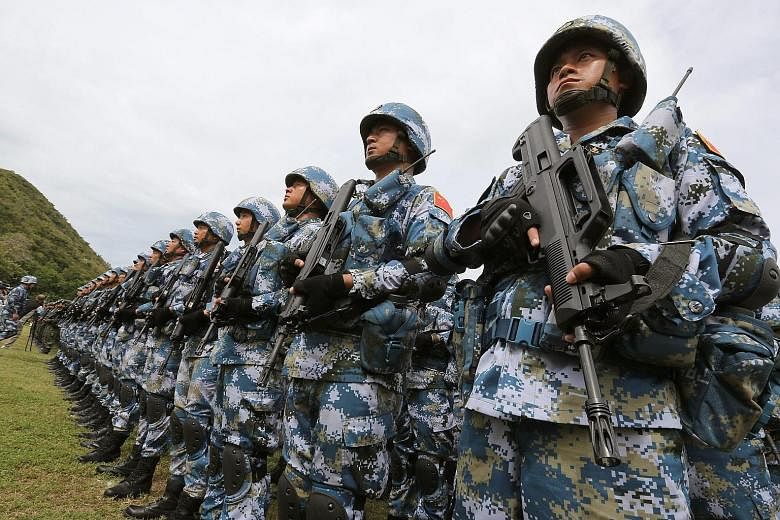HONG KONG • Global defence contractors are circling for business in Asia, with countries from Australia to Vietnam upgrading and adding everything from submarines to fighter jets as China expands its military reach.
Defence budgets will keep rising, according to IHS Jane's, which forecasts spending in the Asia-Pacific region will climb 23 per cent to US$533 billion (S$735 billion) annually by 2020. That will put it on a par with North America, which is expected to account for a third of global defence spending by then, from almost half now.
The figures reflect a shifting strategic dynamic, as China pushes for greater influence and the US seeks to preserve decades of dominance in the western Pacific.
While military spending in Asia is coming off a low base - especially in South-east Asia - and remains a relatively small proportion of gross domestic product, nations that for years relied on old and at-times outdated ships and planes are starting to renovate their fleets.
"There is a wide-ranging need for modernisation across most of the armed forces in the region," said Mr Dan Enstedt, chief executive officer of Saab Asia Pacific, whose products include submarines, missiles, radars and fighter jets.
"There are many examples of old and increasingly obsolete equipment fleets that are unable to keep pace with changing national security needs."

Military outlays in Asia and Oceania - which includes Australia and New Zealand - grew 5.4 per cent in 2015, outpacing a 1 per cent rise in global spending, according to the Stockholm International Peace Research Institute.
Indonesia boosted spending last year by 16 per cent, the Philippines by 25 per cent and Vietnam by 7.6 per cent.
"The unusual thing about Asia is that it is bucking the global trends," said Mr Richard Bitzinger, who studies military modernisation as a senior fellow at the S. Rajaratnam School of International Studies in Singapore.
Much of the spending is on air and naval capacity amid China's assertiveness in the East China Sea, where it claims islets contested by Japan, and the South China Sea, where its land reclamation programme has spooked other claimants.
"The growth of China's national power, including its military modernisation, means China's policies and actions will have a major impact on the stability of the Indo-Pacific," according to Australia's Defence White Paper published in February.
A quarter of Australia's defence investment over the next decade will be devoted to maritime capabilities, for "the most comprehensive regeneration of our navy" since World War II, it said.
US President Barack Obama's recent trip to Vietnam may lead to business opportunities, as he lifted a four-decade ban on the sale of lethal weapons.
The US embassy has hosted two defence contractor symposiums in the Vietnamese capital Hanoi, including one last month attended by companies including Boeing and Lockheed Martin.
Mr Doug Greenlaw, a vice-president at Lockheed, said in an interview in February at the Singapore Airshow that Asia is at the core of the company's strategy.
"The economies in Asia are growing faster than in the rest of the world - that tends to really drive security spending, so we see Asia as a growth market," Mr Greenlaw said.
"We have great partnerships with the countries across Asia."
Still, much of the spending comes off a low base.
The Philippines spent 1.3 per cent of GDP last year, up from 1.1 per cent in 2014, according to Sipri, while Vietnam was largely flat at 2.3 per cent of GDP. China's outlays were 1.9 per cent of its economy, well below US expenditure last year of 3.3 per cent of its economy.
"All the major defence names - Boeing, BAE, Lockheed Martin, Saab - they've all strengthened and established local presences in the market here in the past five years," according to Mr Jon Grevatt, an analyst at IHS Jane's in Bangkok.
BLOOMBERG

